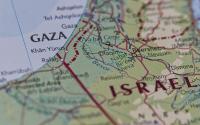22 August 2005Dan Glaister
The four distinguished visitors looked on in awe at the sight before them. Exit Glacier in Alaska's Kenai Fjords national park is one of continental America's most imposing monuments, and last week it was at its most impressive - a hulk of ice and snow imperceptibly making its way toward the sea.
But lately that movement has quickened, a fact that will not have been lost on visitors. One of the most popular tourist attractions in Alaska, Exit Glacier has receded 300 metres (1,000ft) in the past 10 years. The movement means that the viewing platform from which the group of dignitaries surveyed the glacier would have been under several feet of ice just a few years ago. Today it is on dry land.
The four VIPs included an unlikely couple, both probable presidential candidates in 2008, both plausible winners, and from opposite ends of the political spectrum.
One was John McCain, Vietnam veteran and republican senator from Arizona. The other was Hillary Rodham Clinton, White House veteran and New York senator. That they should choose to visit Alaska together in order to investigate climate change raised a few eyebrows. Rupert Murdoch's Fox News even hinted, in jest, that the two were having an affair.
But, despite the political barbs, the senators had a serious purpose. Soon the issue of climate change - often code for global warming - was back on the national political agenda.
Mr McCain, who has sponsored a climate stewardship bill with the Democratic senator Joe Lieberman, said: "The question is how much damage will be done before we start taking concrete action. Go up to places like we just came from. It's a little scary."
Melting glaciers is only one of Alaska's problems. As Kate Troll, an environmentalist writing in the Anchorage Daily News, put it earlier this month: "Besides retreating glaciers, insect infestations and more intense forest fires, Alaska is experiencing melting permafrost, flooded villages, warming oceans, coastal erosion, shifts in bird and wildlife populations, and shorter seasons for ice roads. And there is more to come, as Alaska is heating up at twice the rate of the rest of the world."
Last year was the warmest summer on record for much of Alaska. An Arctic Climate Impact Assessment report published in November 2004 said Alaska's average annual temperature rose 3.3C between 1949 and 2003. Some areas have risen twice that much.
A further report published in March noted that the average temperature in the Arctic had risen by 0.4C a decade since the mid-1960s. The study reported that the last decade was the warmest since records began, and that the current warming in the Arctic was without precedent since the last ice age.
All of which has prompted a mini tourist boom, a "catch-it-while-you-can" attitude among visitors eager to see the glaciers while they are still there. This year, Alaska is set to beat the 1.45 million tourists of 2004.
Many tourist centres are making the most of the bad news, regaling visitors with video presentations bearing titles such as Glimpses of an Ice Age Past.
One of the best known and most visited Alaskan glaciers, Muir Glacier, named after the pioneering environmentalist John Muir, has retreated five miles in the past 30 years. Another, Portage Glacier, is retreating at a rate of 50 metres a year and is no longer visible from its visitor centre.
In December, a geologist with the US Geological Survey presented a series of photographs of glaciers taken in the first four years of this century, alongside pictures taken up to a century before.
The result showed not just the retreat of glaciers but the spread of vegetation where once there was merely ice.
"You don't need science to prove the point," Matt Nolan of the University of Alaska told the American Geophysical Union, where the pictures were unveiled.
"This evidence is visual, and it's real. All the glaciers in the Arctic National Wildlife Refuge are retreating from their most extended positions thousands of years ago, and the only scientific explanation for their retreat is a change in climate."
The key question - preoccupying everyone from senators with an eye on the White House, to tourists with an eye on their holiday snaps - is what is to blame. Is it global warming or is it merely part of the planet's climate cycle?
The Republican senator Lindsey Graham, a member of the VIP group visiting Alaska last week, called for politicians to put aside their differences and deal with the problem.
"Climate change is different when you come here, because you see the faces of people experiencing it in Alaska," he said. "If you can go to the native people and listen to their stories, and walk away with any doubt that something's going on, I just think you're not listening."
http://www.guardian.co.uk/print/0,3858,5267669-110970,00.html






